Housing Discrimination: A Closed Door in Palo Alto
After suffering through the aggressive racism of the Jim Crow South, millions of African Americans left forthe industrial cities of the North and the supposedly tolerant climate of California in the three decades following World War II. But if they found there a less confrontational form of racism, the effect would often prove every bit as detrimental as the burning crosses and separate drinking fountains of the South. Perhaps most insidious was the housing discrimination they faced in their new surroundings. The actions taken by white property owners and realtors, with a nod from the Federal Housing Administration, would eventually relegate most African Americans to living in separate and vastly unequal neighborhoods.
While there have certainly been many instances of racial brotherhood and tolerance in Palo Alto, anyone looking back into the city’s history must come to terms with the role that racism and bigotry played in theunfair treatment of African Americans and other minorities. Here, housing discrimination has led to the creation of “two Americas” right in our midst. While largely poor and minority East Palo Alto suffers from crime, unemployment and a troubled school system, just across the freeway Palo Alto thrives after decades of excluding blacks.
In the early days of the city only a few African-American citizens called Palo Alto home. But as their numbers grew and more Asians moved into town as well, attitudes in Palo Alto grew less tolerant. In 1920, the Palo Alto Chamber of Commerce passed a resolution calling for a “segregated district for the Oriental and colored people of the city.” The motion was supported by Palo Alto Times publisher George F. Morell, as well as the Native Sons of the Golden West, the American Legion and the Palo Alto Carpenters Union. The Palo Alto Times ran editorials in support of the idea. Henry Dodson, the president of the Colored Citizens Club of Palo Alto, responded with dignity and class, stating publicly that “we believe the best people of this city are in unison with the great majority of the people of this state who dissent from such an undemocratic doctrine.” He also chastised those who were pushing segregation, saying “Shame on a race that…holds in its hands the wealth of the continent and yet, not only refuses to lift his less fortunate fellow man…but seeks through humiliating, illegal ordinances and discrimination to sink him to the lowest depths of ignorance and vice.”
Eventually the plan died, and although racial zones would be suggested again in the 1940s, such segregation was never legislated in Palo Alto. Still, African Americans would have to fight less vocal racism in the future. For while few Palo Altans demonstrated outward hatred toward minorities or had an inclination to throw white sheets over their heads, there were not many residents who were ready to live next door to a person of color.
The postwar economic boom would bring an influx of southern blacks to the Bay Area. In Palo Alto, their numbers would rise from 239 in 1940 to 467 seven years later, with most African-Americans crowding into a few scattered neighborhoods in town. The most prominent black neighborhood was on Ramona Street near the spiritual home of the community, the University A.M.E. Zion Church. But there were also concentrations of African-American residents on Fife Street near downtown and south of Colorado Avenue on old El Capitan Road. Conditions on El Capitan Road were described by Times Editor Elinor Cogswell in 1951: “These houses stand in tinder dry weeds among mountains of trash…the shacks are not only unsightly but a fire menace. By-passed by the city garbage collectors, the residents [have] to burn such refuse.”
As more blacks attempted to move into the city and black residents tried to move out of its ghetto, they met widespread resistance. For instance, the majority of subdivisions established in the city between 1925 and 1950 included the following clause: “No person not wholly of the white Caucasian race shall use or occupy such property unless such person or persons are employed as servants of the occupants…” Other covenants were more informal. When black trucker William Bailey and his family of six moved into the Palo Alto Gardens complex in then mostly white East Palo Alto, residents actually tried raising funds to buy out Bailey to keep it segregated. Hundreds of other such stories never made it to the local press, and most blacks did not even attempt to move across the area’s well-known color lines.
And some of these lines were essentially sanctioned by the federal government. The Federal Housing Association (FHA) divided properties into four categories for banking purposes, from desirable Type A properties to “risky” Type D properties outlined in red. African-American neighborhoods were almost always put in the D category--a practice which would later be called “redlining.” In fact, FHA manuals instructed banks to steer clear of sections with "inharmonious racial groups" and suggested that cities enact racially restrictive zoning ordinances, as well as covenants prohibiting black owners. With such covenants excluding African-Americans from Type A and B neighborhoods and with mortgage loans denied them in Type C and D communities, many blacks faced few options but to rent in urban ghettos. And indeed when an African-American family looked for housing in the Palo Alto area, they usually found the realtor driving into redlined East Palo Alto.
For real estate men, these actions tended to be motivated by profit as much as by bigotry. In 1956 one Burlingame realtor bluntly told the Palo Alto Times: “It’s pretty well proven that when Negroes come in, property values drop. It’s quite a determining factor when I realize I’m going to cost my neighbors two or three thousand dollars.” In the same article, Doug Couch, president of Palo Alto’s Board of Realtors, agreed, “If you do sell to Negroes, everyone else is down your throat.” Couch’s estimate of attitudes in Palo Alto was pretty accurate. A 1952 survey by the Palo Alto Fair Play Council reported that only 68 Palo Altans polled would rent to person of good character regardless of race while 198 would rent to Caucasians only.
Some realtors engaged in so-called block-busting schemes, in which agents would stir fears that a neighborhood was about to be inundated by minority residents--and then seek to profit from panic selling. Many parts of East Palo Alto and the Belle Haven district of East Menlo Park experienced this sort of massive “white flight” after a few black residents moved in. Furthermore, when blacks did intentionally break the color line, they often found their white neighbors putting up “For Sale” signs.
Of course, there were groups in Palo Alto that condemned such attitudes and supported open housing. Throughout the 1950s, the Palo Alto Fair Play Committee pushed housing integration by showing documentary films, lobbying government to adopt new laws and helping to improve infrastructure and housing conditions in majority-black neighborhoods. In 1958, over 1,000 Palo Altans signed a petition for “open and unsegregated housing” that was backed by 12 area churches. The petition stated that “all persons are children of God and therefore to be treated as equals under God.” And then there was Joe Eichler, the famed home builder who refused to abide by the standards and insisted that his homes were to be sold to anyone and everyone who had the money.
All over California, fair housing issues were getting attention. The 1963 Rumford Fair Housing Act to end housing discrimination in California was upended in 1964 when voters passed Proposition 14, an initiative promoted by the California Real Estate Association that essentially banned any government action against housing discrimination. It wasn’t until 1967, after the California Supreme Court found that the initiative violated the state constitution, that the U. S. Supreme Court upheld the state decision on the grounds that the realtor’s initiative violated the Fourteenth Amendment.
And by the 1970s, although the “black neighborhoods” of Palo Alto were long gone, there were many more advocacy groups fighting for open housing. The NAACP, Midpeninsula Citizens for Fair Housing and the city’s own Human Relations Committee had all joined the fight. Still, a 1971 survey by the Midpeninsula Citizens for Fair Housing revealed that racism in housing was widespread. One study showed that 58% of the city’s large apartment complexes showed evidence of discrimination when black and white middle class professionals inquired for apartments in sequence.
Two decades later, not enough had changed. The Palo Alto Weekly reported that the Midpeninsula Citizens for Housing found racial bias when testing with control subjects. The Weekly reported that “blacks who want to live in Palo Alto report they sometimes have trouble finding housing because the apartment or house is ‘no longer available’…[but] a white person arriving just a half hour later often finds the apartment available.”
Today, middle and upper class black residents are scattered throughout largely white and Asian neighborhoods in the city. And although recent newspaper reports paint a picture of openness in Palo Alto toward black residents, the legacy of years of housing discrimination is still with us. Despite the massive migration of blacks to the Peninsula in the postwar years, Palo Alto’s African-American population still stands at just 2%, as it has since the Great Depression. And if Palo Alto’s population does not entirely look like America today, it is clearly because the city shut its doors to some Americans in the past.
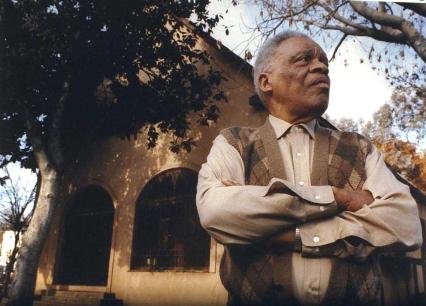
The AME Zion Church on Ramona Street was at the center of the old African-American community in Palo Alto. (PAHA)
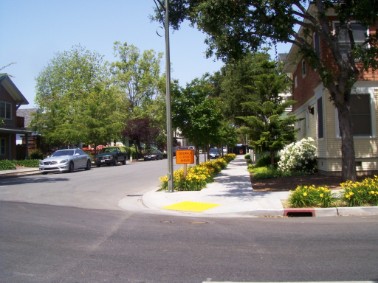
Ramona Street was once an African-American neighborhood.
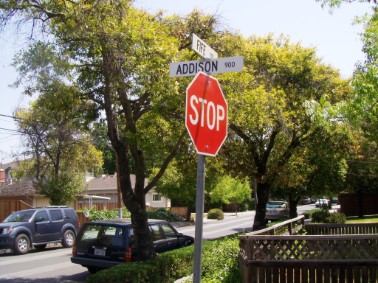
Fife Street was also once an enclave for African-American residents.
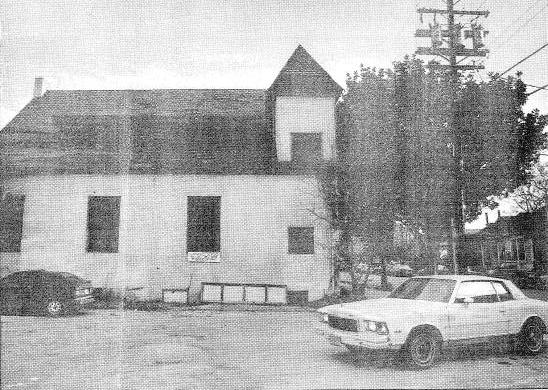
The old AME Zion Church in the 1980s.
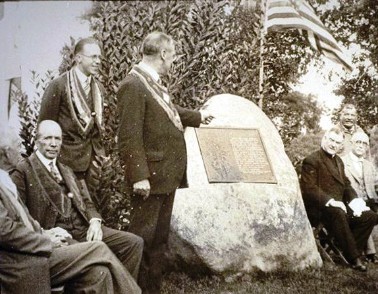
The Native Sons of the Golden West supported a plan to create a separate area of Palo Alto for minorities. (PAHA)